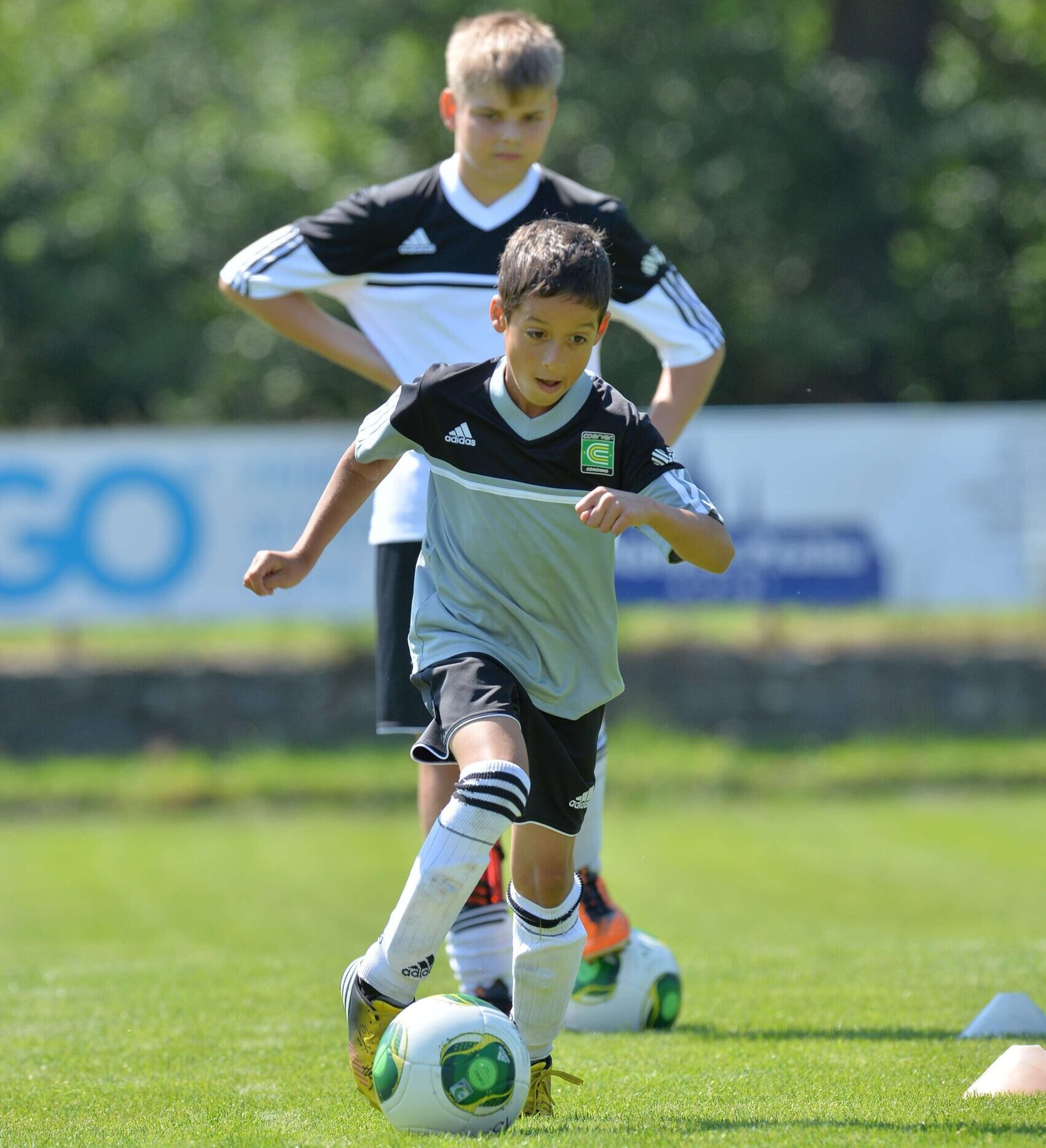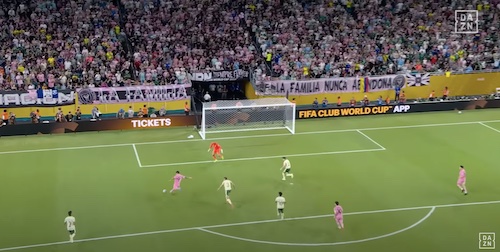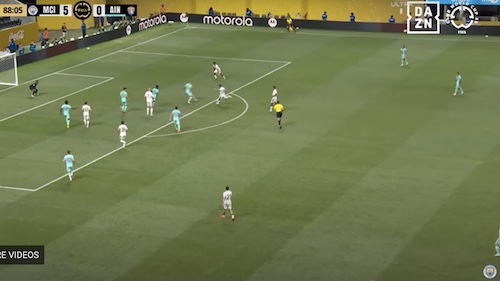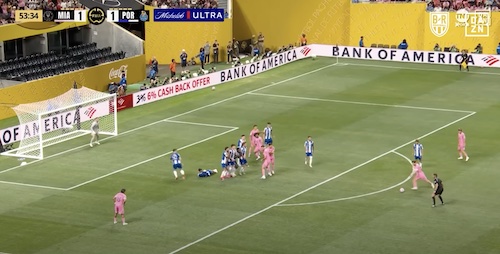Let’s learn how to become a faster soccer player…let’s get faster through a soccer speed training program. And as far as faster, I’m not talking about your Internet connection, or your commute to work! I’m talking about getting to the soccer ball faster, dribbling at a faster speed, and blowing past defenders with the ball. One thing that’s true for soccer along with most other sports, is speed is a differentiator. It sets players apart. In a few words, speed kills. It gives you an edge.
Needless to say, speed is a top priority for soccer players, but how can you develop and improve your speed on the soccer field? How do you get faster? Let’s take a look at how to get faster in soccer.
As noted in the plyometrics section, soccer speed relates directly to power. Power is essentially a combination of both strength and the speed of contraction. If you can increase one, you can increase power. But ideally, you want to increase both, so this is where weight training and plyometrics come into play. Weight training increases strength and plyometric exercises turns that strength into speed and power.
Review both of these sections (plyometrics and weight lifting) so you can combine both types of exercises to improve your overall speed training workout. Since one can enhance the other, both should be used in tandem so you can maximize your overall performance on the field.
Soccer can be a tough sport if you’re not in good shape. Soccer athletes must have not only an endurance base, but also the ability to sprint at full speed for short distances – quick bursts of speed. Training for soccer speed requires a mix of aerobic conditioning (i.e. distance running) and anaerobic power (sprinting).
And sometimes soccer speed is all mental, as is evident in the quote from Ronaldinho below. How do you get faster mentally? This comes from playing games – the more games you play the better. And this comes from playing with better players who will challenge you.
QUOTE: “You have to try to read the game quickly, sometimes even a second before the rest. What I try to do is to calculate, know the characteristics of my teammates, how they like to receive the ball, at what speed they like it, if they need it at their feet or a little in front.”-Ronaldinho
Now let’s get back to how to get faster, physically…using our two legs.
Speed is an essential component of nearly all sports. Someone who is said to be fast is someone useful to have in a team. But what does speed, or being fast mean? It doesn’t just mean being able to sprint 100 meters in a fast time. Being able to run fast in a straight line is great for a track athlete but for a lot of sports, and especially for soccer, speed means a few things.
The Seven Aspects of Soccer Speed:
1. the ability to accelerate quickly
2. a high maximum speed
3. the ability to react quickly to situations
4. being able twist, turn and change direction quickly
5. the ability to produce bursts of fast running throughout the game
6. the ability to read a situation and anticipate
7. the ability to move the ball and use the ball at speed
The first five elements are areas that we can improve upon in specific speed training. The last two are areas that are specific to soccer training with a ball.
Some key points to remember when doing specific speed sessions (that is sessions without a ball) are:
- Players must be fully warmed up
- Speed work should be done at the start of a session when players are fresh
- Speed requires explosive movement and care should be taken if players tired or have injuries.
- Good form and technique together with relaxation is the key to running fast.
A lot of people say that sprinters are born and not made, and while it is true that genetics plays a large part in a players ability to move quickly, all players can improve all aspects that make up speed.
These are just some of the ideas I use when working on different aspects of speed.
Acceleration
To get acceleration, a player needs to move his/her feet very quickly, gradually increasing stride length as he/she drives forward. Fast feet drills, using speed ladders etc. can greatly help a players acceleration as well as coordination. Strength can be increased using sprint drills and low intensity ply metrics (for players 13+).
Weight training is ideal to gain specific strength but not for youth players under the age of 13 or so.
Maximum Speed
Maximum speed requires leg strength and leg speed. One way in which youth players can gain more leg strength and leg speed is to work on sprint drills. These are drills that break down the sprinting action and work on specific areas. I like to use these as part of a long warm up session and usually perform them over roughly 20-30 meters. With all these drills, it is important that the arm action is strong and relaxed. Mimic the arm action of sprinting style, so for instance if doing bum kicks, don’t try and kick your hand that you place behind you, run with normal arm action.
- Bum kicks, concentrate on leg speed
- High knees, taking care not to lean back
- Skips for height
- Skips for length
- Bounds for length (players 13+)
- Hops for length (players 13+)
- Do 2 to 4 repetitions of good quality drills, slow jog or walk back to recover.
Reaction Speed
Having players sprint when they are given a command. The command can be visual or a sound. Remember that in game situations, they will usually react to visual stimuli. It is also a good idea to have players react while they are moving rather than standing still. Players would not normally be stationary during a game, and nor would they usually be required to react quickly and at speed from a stationary position.
Lots of fun game type drills can be used, where players in pairs react to a command or signal as part of race or relay. This keeps players concentrating on the command and therefore making their running reaction more natural and relaxed. In other words, rather than have them stationary, then you say “set” “go”, they are running on the spot and may have to jump, turn, or sprint forwards, backwards etc.
Change Direction
Setup drills and sprints where the players are not just running in a straight line. Get them to run back then forwards, side to side, then back, diagonally etc. In a game there are no restrictions on the directions they will so incorporate multi direction runs into speed training.
Sustain Speed
Speed endurance is the ability to hold close to maximum speed for as long as possible, a 400 meter runner has good speed endurance. A soccer player, needs elements of speed endurance but also need to be able to carry out many short bursts of effort during a match. To train for this requires, interval type training, with high intensity and a reasonable recovery period. This type of training, should take place once the player has had some base training to get some initial endurance on which to build more specific speed endurance.
Related articles:














